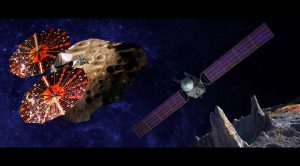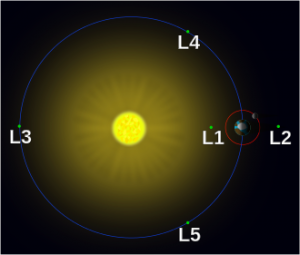Two days ago on January the 4th, NASA selected two new missions as a part of their discovery program for the exploration of deep space, away from Earth orbit that is. The new missions are named Lucy and Psyche and will carry out detailed examinations of a range of asteroids not yet studied. To read NASA’s announcement of the missions click the link below.
https://www.nasa.gov/press-release/nasa-selects-two-missions-to-explore-the-early-solar-system

Since I’m more interested in the Lucy mission I’ll talk about Psyche first. The Psyche spacecraft will travel to the unusual asteroid 16Psyche. The thing that makes 16Psyche so different, from measurements made here on Earth, is that it has a much higher content of Iron and Nickel than the asteroids we visited so far. In fact it looks a great deal like what we believe the core of our own planet is.
Astronomers have for over a hundred years speculated that the asteroid belt is actually another planet that failed to form because of the gravitational effects of massive Jupiter next door. If so then 16Psyche may be the core of that failed planet and by studying it we may learn something about how planets form as well as something about the core of our Earth.
On the other hand the Lucy mission intends to visit no less than seven different asteroids in the areas of space know as the Jupiter Trojan positions. The Trojan positions have always fascinated me; they are in fact the only stable three body solutions to Newton’s equations of planetary motion Solutions that were discovered by the French mathematician Joseph-Louis LaGrange in his search for a general solution to the “Three Body Problem”.
You see, although when Newton’s laws are applied to a star and a single planet they quickly lead to a nice simple function as a solution, when you add in the gravitational effect of a second planet, a third body, there is in general analytic no solution. After Newton’s death LaGrange and other mathematicians searched for solutions to the three body problem and even today there is work being done on the problem.
So, if there is no general solution how do astronomers calculate when an eclipse will occur, or when a comet will appear in the sky or how did they calculate the trajectory of the Voyager 2 spacecraft as it went past four planets. Well you do it a tiny bit at a time, over and over again.
This was an assignment I had to do in Graduate school. You see, if you know the positions and momentum of the planets today you can calculate what their positions will be, let’s say tomorrow. Then, using Newton’s laws of Gravity, you calculate how their new positions change their momentum. Then you just repeat the whole process over and over again.
This is the sort of calculations that computers are good at, that’s how I did it in Grad school. But back in LaGrange’s day a person had to do all that arithmetic and it would take years! My hat is off to those gentlemen.
Monsieur LaGrange was able to find five particular solutions to the problem (See Picture Below) and these are know as LaGrangian points in his honor. But only two of these positions are stable, L4 and L5 and these have become known as the Trojan positions because Jupiter has acquired a number of asteroids at it’s L4 and L5 positions. Asteroids which have been named for characters in Homer’s Iliad with L4 being the Greek camp and L5 being the Trojan camp.

Getting back to the Lucy mission. Expected to launch in 2021 Lucy will flyby the main asteroid belt member 1981EQ5 in 2025 on it’s way to the Greek camp (L4) where it will encounter four different asteroids in 2027 and 2028. Lucy will then loop back around Earth before headed back to the Trojan camp (L5) for a final encounter with the dual asteroid Patroclus/Menoetius in 2033. This is going to make Lucy one of the longest and certainly most complex missions ever attempted. A lot to look forward to in the years ahead.

Great post!
These selections will enable the next generation of planetary scientists and engineers to use revolutionary new mission concepts that have the potential to return extraordinary science,” said Buckner.
I agree. I’m very much looking forward to the results of the probe to Jupiter’s Trojan points! Thanks for the comment.
Bob L
These miniaturized satellites, known as nanosatellites or CubeSats, can fit in the palm of your hand and are providing new opportunities for space science.
Well Lucy and Psyche are not these new CubeSats but you’re right about miniaturized satellites increasing our ability to explore space!
Bob L
The article has actually peaks my interest. I’m going to bookmark
your site and keep checking for new information.
Thanks for the comment and don’t forget to tell your friends!
Bob L
These selections will enable the next generation of planetary scientists and engineers to use revolutionary new mission concepts that have the potential to return extraordinary science,” said Buckner.
Thanks for the comment but who’s Buckner?
Bob L
These selections will enable the next generation of planetary scientists and engineers to use revolutionary new mission concepts that have the potential to return extraordinary science,” said Buckner.
Well I don’t know who Buckner is but thanks for the comment. I hope you and Mr. Buckner come back real soon!
Bob L